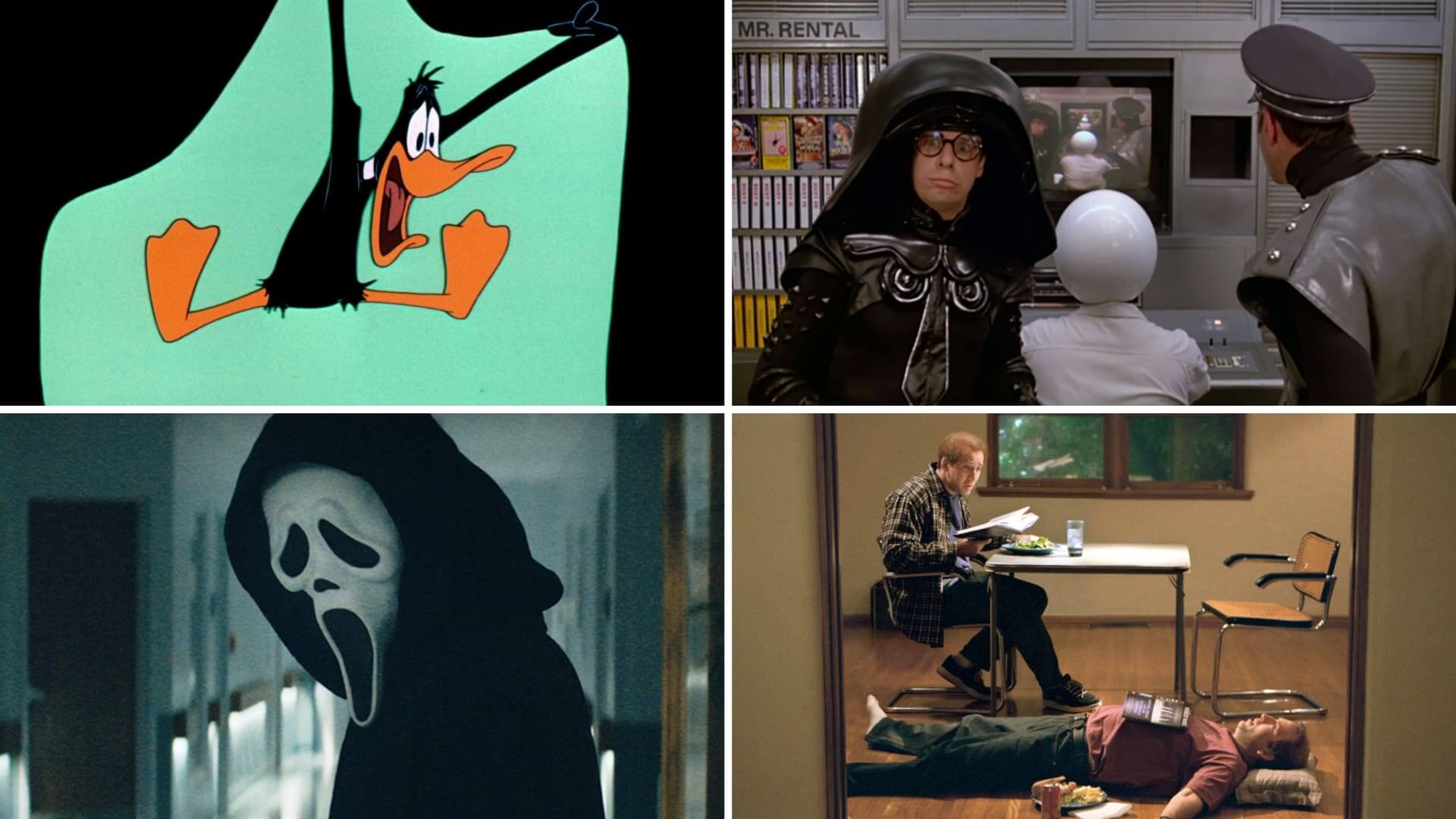You’ve most likely heard of breaking the fourth wall, a phrase which refers to when a character directly addresses the audience. The popularity of the term has recently given rise to a new, related term: breaking the third wall. So what is breaking the third wall, and how can it be used? Let’s look into it.
Breaking the 3th Wall Meaning
Breaking the third wall
Because the term “breaking the third wall” is relatively new, its definition hasn’t yet been codified into every cinephile’s vocabulary. There’s been some argument on various forums, but the emerging consensus seems to be this:
BREAKING THE 3TH WALL DEFINITION
What is breaking the third wall?
Breaking the third wall refers to when a character addresses the medium in which they are situated. This is one level removed from breaking the fourth wall, in which characters acknowledge and/or speak to the audience. Breaking the third wall doesn't acknowledge the audience but it can become an implicit inside joke between them. This technique points to the fact that there is some sort of "medium" that the audience is consuming. Whereas breaking the fourth wall is a definitive "break" in the illusion, breaking the third wall is more like "bending" the illusion.
Examples of Breaking the Third Wall
- A character in a horror film saying, “We can’t split up– what, are you in a horror movie or something?”
- Two characters fall in love in a Rom-Com and one says, “It’s like the perfect ending to a Rom-Com.”
- A character on a TV show saying, “Hm, I think that was last episode.”
Does this sound familiar? Breaking the 3rd wall is another way to say “meta,” temporarily zooming out from the text and addressing the text itself. You could also call it self-aware or self-referential.
Behind The Third Wall
Breaking the third wall in film and TV
Even though breaking the third wall is a new term, it’s describing a tactic as old as film itself. Let’s look at a few great examples of when the writers and/or the characters make cheeky acknowledgments to their respective mediums.
DUCK AMUCK (1953)
Daffy Duck broke the 3rd wall
One of the most iconic instances of third wall breakage can be found in the Looney Tunes episode “Duck Amuck.” The short follows Daffy Duck as he tries to negotiate with a rogue animator who happens to be animating… Daffy Duck. The entire episode is a third wall break: the very narrative revolves around Daffy Duck being a cartoon.
THE CABIN IN THE WOODS (2012)
What is the 3rd wall in The Cabin in the Woods?
Joss Whedon is the king of third-wall-breaking, constantly having characters address tropes of the medium they’re in. Whedon wrote the film with Drew Goddard, and the two set out to mock the predictability of horror movies. To do this, they have characters acknowledging horror film beats at every turn.
THE MUPPET MOVIE (1979)
At 2:19, Kermit broke the 3rd wall • Behind the third wall
Like Cabin in the Woods, The Muppet Movie breaks the third wall routinely throughout its runtime. Its title is already preparing the audience: this is a movie that knows it’s a movie.
Like “Duck Amuck”, the film’s third wall break is also accompanied by a fourth wall break, as Kermit turns and talks to the camera.
Breaking the 3th Wall
To break or not to break
As you can see, the third wall is not a novel idea, even if the term itself is. In fact, being over-reliant on third wall breaks can feel rote and uninspired. So before you start inserting meta qualities into your screenplay, think about what purpose those moments are serving.
If it’s just a punchline, it might be best to avoid it, since breaking the third wall by definition removes the audience from the story. Too much of it and the audience will be uninvested in your characters: why care about characters that we see as characters and not fully realized beings?
That said, attempting to break the third wall does have its uses. Take a note from Joss Whedon, who uses meta dialogue to get through the clichés within his plot; essentially, the audience can’t complain about clichés or predictability if a character has already addressed it.
It should be noted, however, that this method is also pretty unoriginal at this point. Whedon and his acolytes have run this type of dialogue (“Uh, that was a bit on the nose, wasn’t it?” and the like) into the ground, so if you’re utilizing it, make sure you’re doing it in a fresh way.
Up Next
Breaking the Fourth Wall
Now that you know about the 3rd wall, it’s time to learn about its more famous cousin: the fourth wall. In this article, we take you through what breaking the fourth wall means, what it looks like, and how to use it.
Up Next: The Fourth Wall →
Showcase your vision with elegant shot lists and storyboards.
Create robust and customizable shot lists. Upload images to make storyboards and slideshows.
